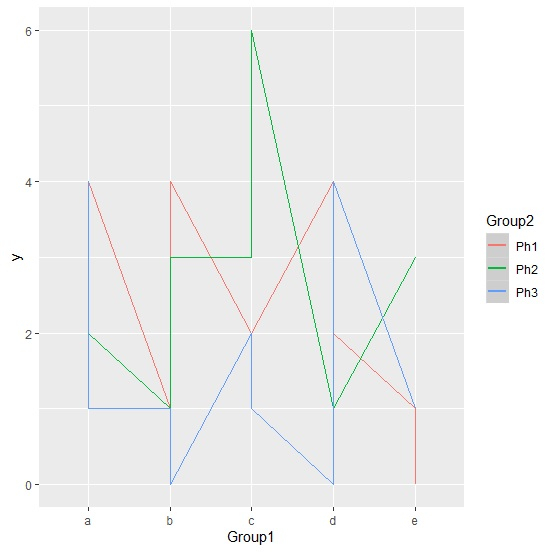
 Data Structure
Data Structure Networking
Networking RDBMS
RDBMS Operating System
Operating System Java
Java MS Excel
MS Excel iOS
iOS HTML
HTML CSS
CSS Android
Android Python
Python C Programming
C Programming C++
C++ C#
C# MongoDB
MongoDB MySQL
MySQL Javascript
Javascript PHP
PHPPhysics
Chemistry
Biology
Mathematics
English
Economics
Psychology
Social Studies
Fashion Studies
Legal Studies
- Selected Reading
- UPSC IAS Exams Notes
- Developer's Best Practices
- Questions and Answers
- Effective Resume Writing
- HR Interview Questions
- Computer Glossary
- Who is Who
How to create a plot for the response variable grouped by two columns using ggplot2 in R?
When two categorical variables make an impact on the response variable together then it is necessary to visualize their effect graphically because this graph helps us to understand the variation in the effect. Therefore, we can create a plot for the response variable that changes with one or both of the categorical independent variables. This can be done with the help of using interaction function in ggplot2.
Example
Consider the below data frame −
> set.seed(1)
> y<-rpois(30,2)
> Group1<-rep(c(letters[1:5]),times=6)
> Group2<-rep(c("Ph1","Ph2","Ph3"),each=10)
> df<-data.frame(y,Group1,Group2)
> head(df,20)
y Group1 Group2
1 1 a Ph1
2 1 b Ph1
3 2 c Ph1
4 4 d Ph1
5 1 e Ph1
6 4 a Ph1
7 4 b Ph1
8 2 c Ph1
9 2 d Ph1
10 0 e Ph1
11 1 a Ph2
12 1 b Ph2
13 3 c Ph2
14 1 d Ph2
15 3 e Ph2
16 2 a Ph2
17 3 b Ph2
18 6 c Ph2
19 1 d Ph2
20 3 e Ph2Loading ggplot2 package −
> library(ggplot2)
Creating the plot with interaction
> qplot(Group1, y, data=df, group=Group2, color=Group2, geom='line')+ + geom_smooth(aes(group=interaction(Group1, Group2))) `geom_smooth()` using method = 'loess' and formula 'y ~ x'
Output

Here, we can see that all the lines are crossing each other therefore there exists an interaction effect of independent variables, which means at least one level combination of both the independent variables (Group1 and Group2) has different mean that the others.

